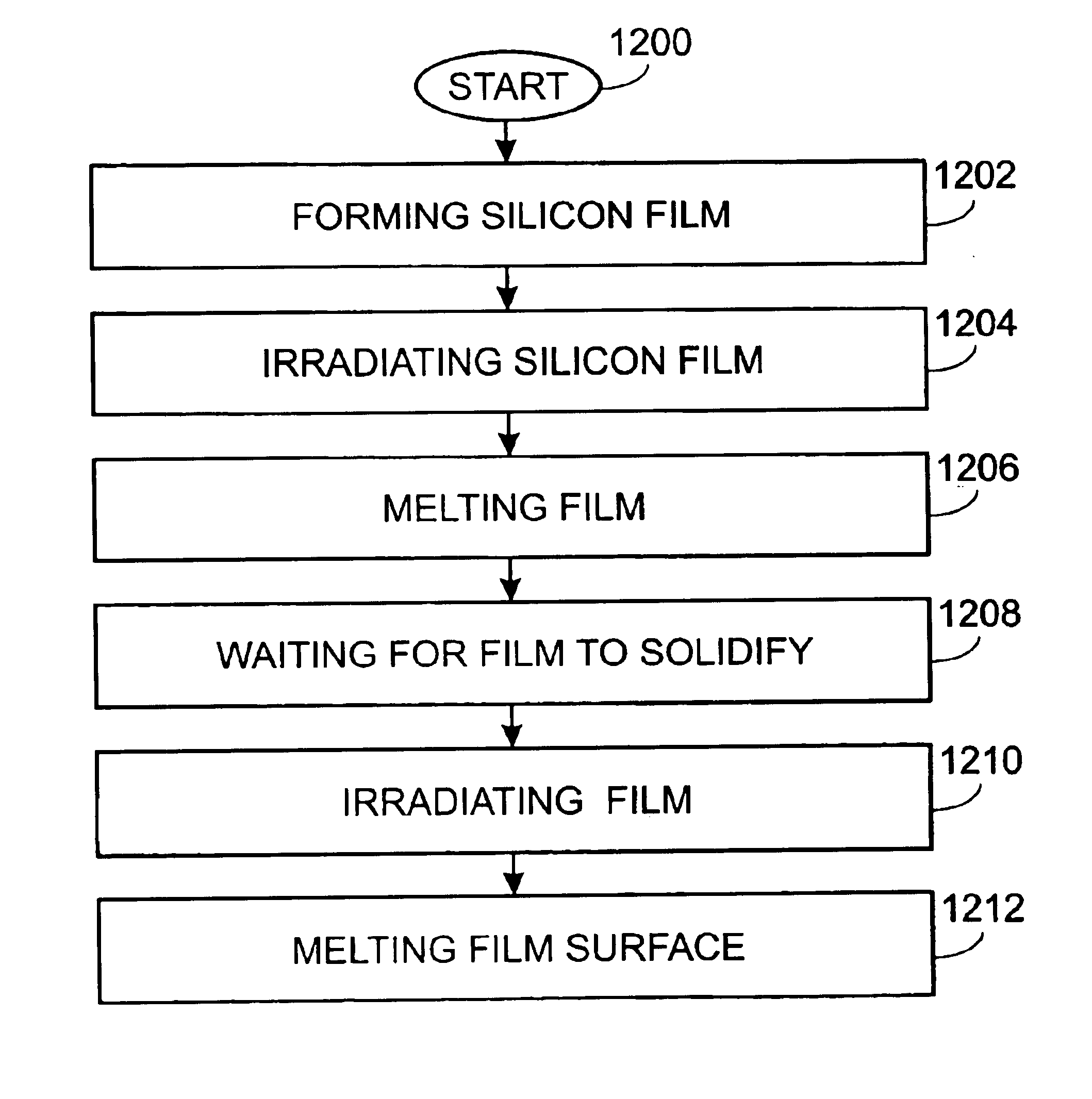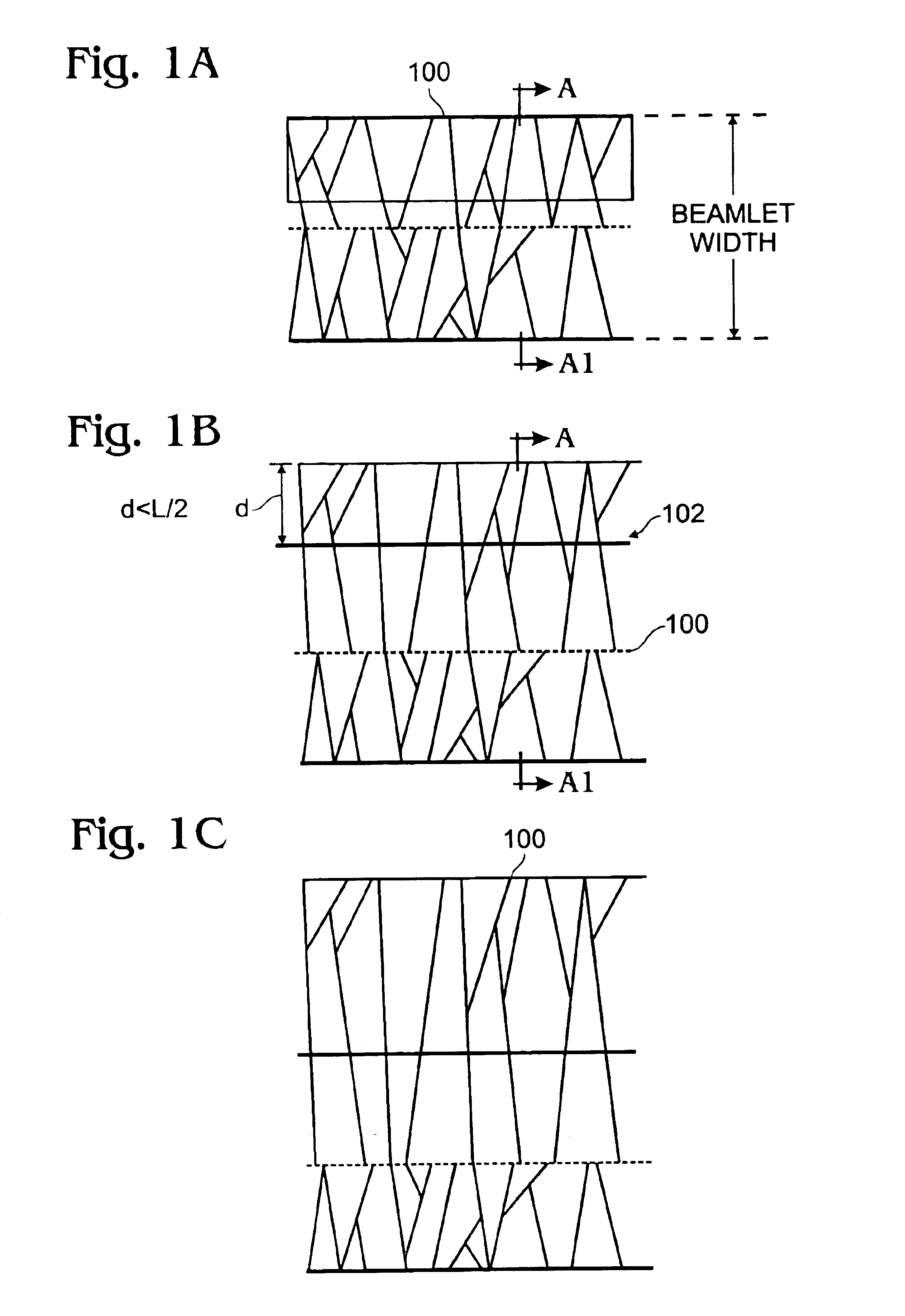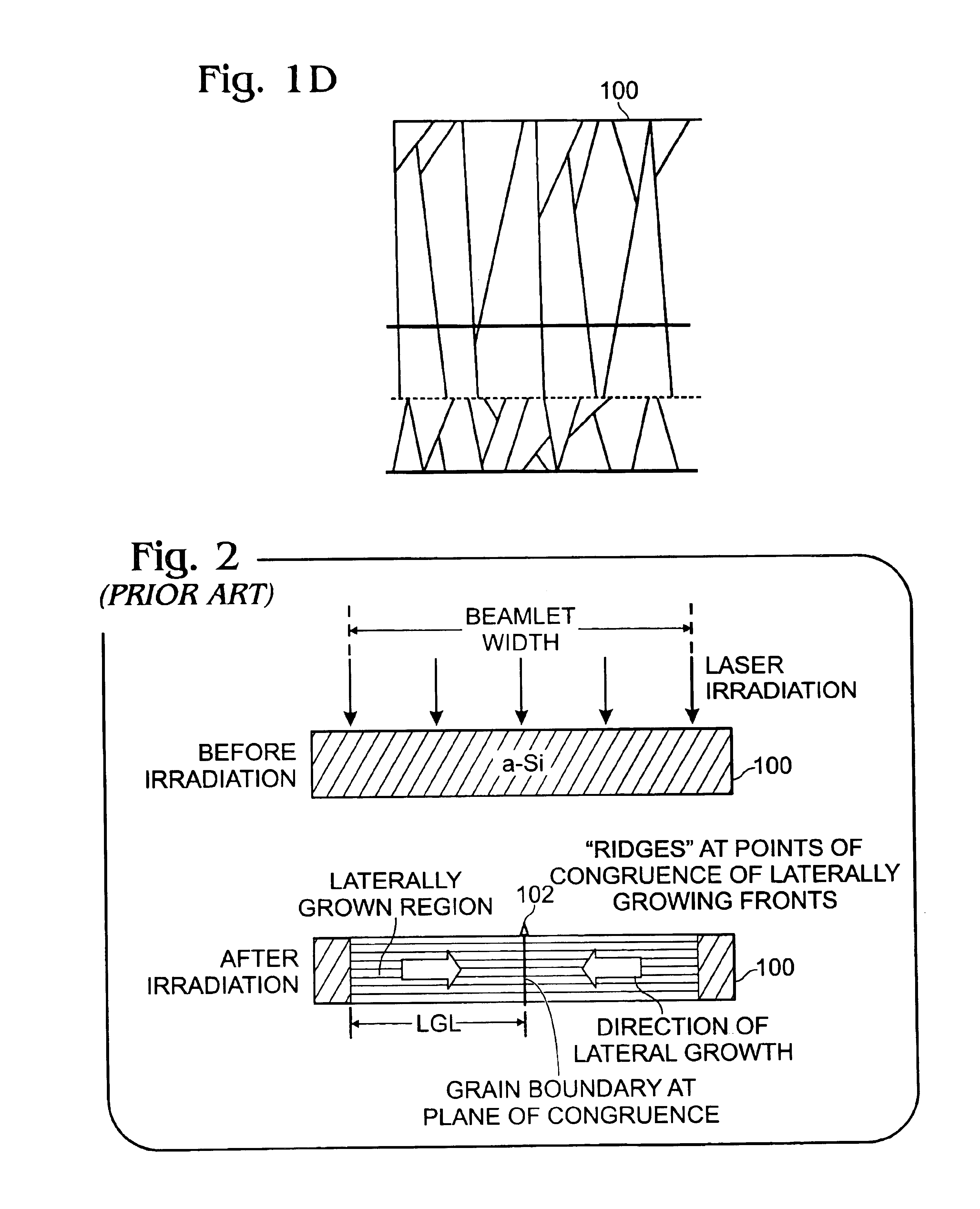Regulated growth method for laser irradiating silicon films
a technology of laser irradiation and growth method, which is applied in the direction of crystal growth process, polycrystalline material growth, chemistry apparatus and processes, etc., can solve the problems of increasing process cost, neighboring tfts with different performance parameters, etc., and achieves enhanced lateral growth length, reduced surface ridges, and reduced surface ridges
- Summary
- Abstract
- Description
- Claims
- Application Information
AI Technical Summary
Benefits of technology
Problems solved by technology
Method used
Image
Examples
example 1
Maximum Surface Planarization
[0033]FIG. 6 illustrates a temporal beam profile at the output of the pulse extender designed to maximize surface flatness. Two pulses are shown in this case, but in principle more pulses could be generated, if so desired. The second pulse (second, in a temporal sense) has a lower intensity than the first, and it is well-separated from the first pulse. That is, the temporal separation between the two pulses is greater than the pulse duration of either pulse, with the pulse duration measured at the Full-Width-Half-Maximum (FWHM) of the pulse. Typical ranges for the various properties of the pulses are shown in FIG. 6. Typically, the pulse duration of either (both) pulses is in the range of 20-50 ns, however, longer pulses may be desirable for larger intensity pulses, measured at FHWM. The temporal separation between pulses is in the range of 60-250 ns, although wider ranges may be useful. The relative intensity reduction between pulse n and pulse n+1 is i...
example 2
Maximum Lateral Growth Length
[0034]FIG. 7 illustrates the temporal beam profile at the exit of the pulse extender designed to maximize lateral growth length. Again two pulses are shown, but in principle more pulses could be generated. An important element of this process is to make the second pulse (or other subsequent pulses) of a similar intensity to the first pulse. Further, the temporal separation between the two pulses is less than the pulse duration of either, with the pulse duration measured at the FWHM of the pulse. Typical ranges for the various properties of the pulses are shown in FIG. 7. The pulse duration (for either pulse) is in the range of 20-100 ns, measured at the FWHM. The temporal separation between pulses is in the range of 30-500 ns. The relative intensity between pulse n and pulse n+1 is approximately the same. In other words, the intensity of the subsequent pulse is similar to its predecessor.
example 3
Comprise Between Planarization and Lateral Growth Length
[0035]FIG. 8 illustrates the temporal beam profile at the exit of the pulse extender designed to compromise between the goals of surface flatness and lateral growth length. Two pulses are shown, but the invention is not limited to any particular number of pulses. To achieve a reasonable compromise between these goals, the temporal pulse separation is not too large and the pulse intensity is not too similar. Typical ranges for the various properties of the pulses are shown in FIG. 8. The pulse duration (for either pulse) is 20-50 ns, measured at the FWHM, the temporal separation between pulses is 30-150 ns, and the relative intensity is reduced in the range of 10%-50% between pulse n and pulse n+1. In other words, the intensity of the subsequent pulse is 50-90% that of its predecessor.
[0036]FIG. 9 is a flowchart illustrating the present invention method for maintaining a planar surface as crystal grains are laterally grown in th...
PUM
| Property | Measurement | Unit |
|---|---|---|
| laser wavelength | aaaaa | aaaaa |
| width | aaaaa | aaaaa |
| length | aaaaa | aaaaa |
Abstract
Description
Claims
Application Information
 Login to View More
Login to View More - R&D
- Intellectual Property
- Life Sciences
- Materials
- Tech Scout
- Unparalleled Data Quality
- Higher Quality Content
- 60% Fewer Hallucinations
Browse by: Latest US Patents, China's latest patents, Technical Efficacy Thesaurus, Application Domain, Technology Topic, Popular Technical Reports.
© 2025 PatSnap. All rights reserved.Legal|Privacy policy|Modern Slavery Act Transparency Statement|Sitemap|About US| Contact US: help@patsnap.com



